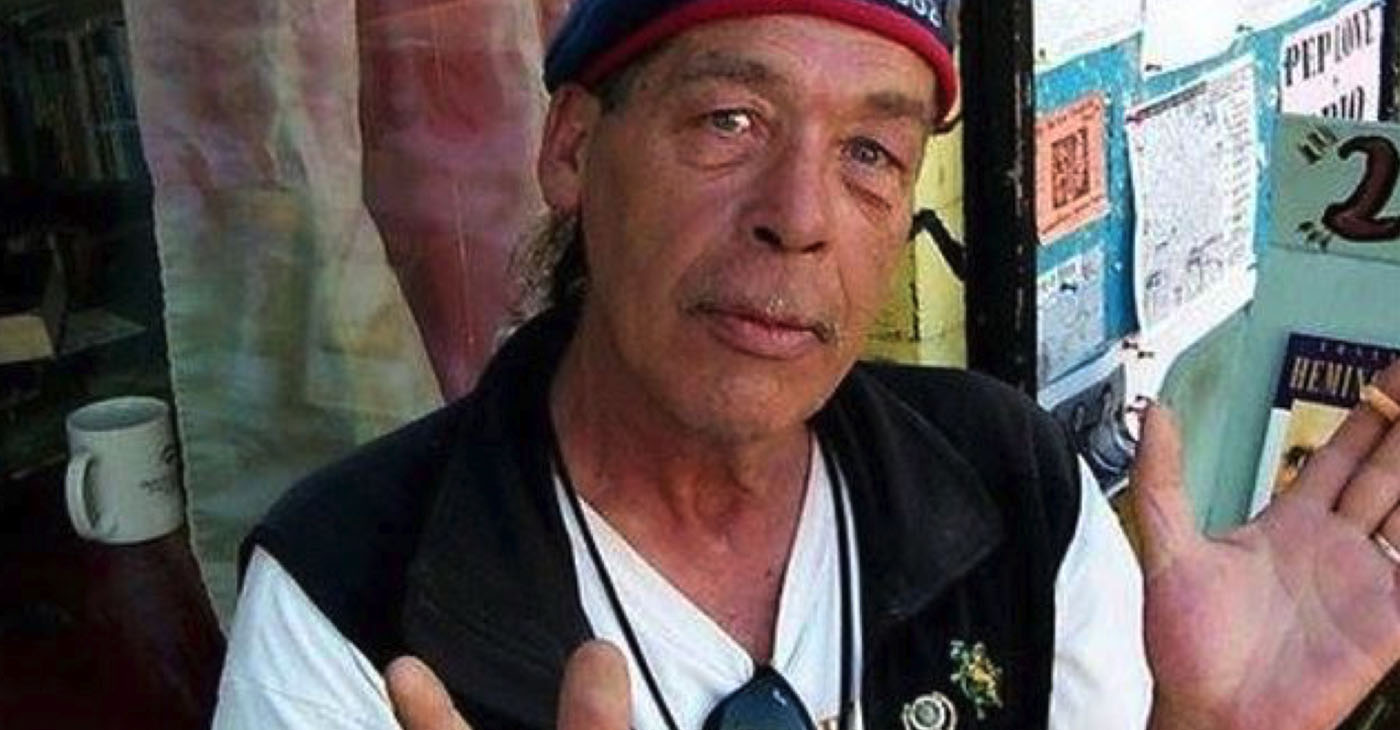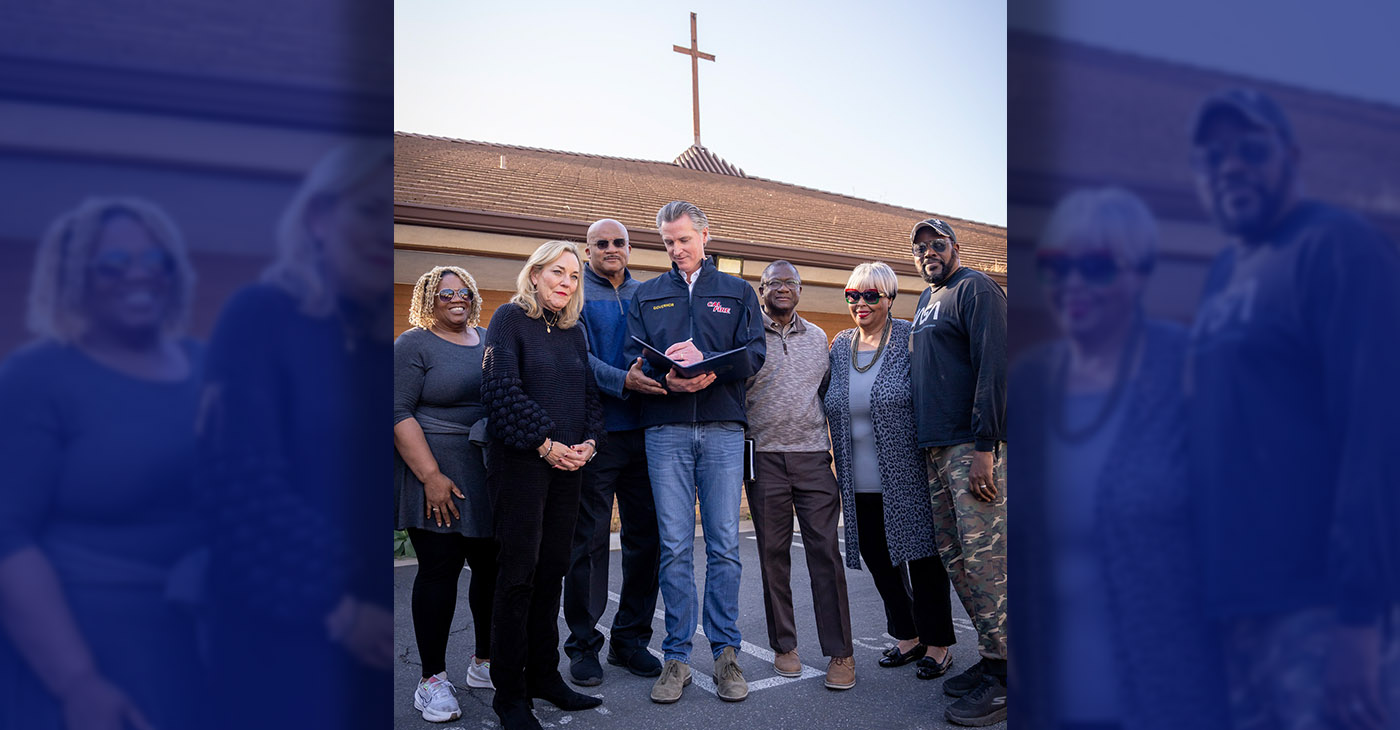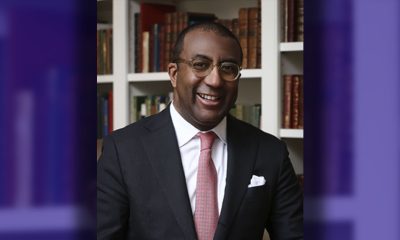Community
A Heartfelt ‘Thank You’ To Richmond and Native Communities from a Cancer Survivor
Recently, I received a powerful spiritual anti-cancer turtle medicine bag medallion and rope necklace from Chief Gordon Plain Bull Jr., a member of the Assiniboine and Sioux Reservation located near Fort Peck, Montana. He is the great-grandson of Chief Plenty Coups and the great-great nephew of Sitting Bull, the famous defender of native lands against settlers during the 1800s.

By Mike Kinney
Recently, I received a powerful spiritual anti-cancer turtle medicine bag medallion and rope necklace from Chief Gordon Plain Bull Jr., a member of the Assiniboine and Sioux Reservation located near Fort Peck, Montana.
He is the great-grandson of Chief Plenty Coups and the great-great nephew of Sitting Bull, the famous defender of native lands against settlers during the 1800s.
Chief Plain Bull’s gift was particularly powerful to me, as it was emblematic of the immense kindness and generosity of the communities in which I live and work, which includes fellow Native Americans and my neighbors here in Richmond.
Aside from reporting stories about people, places and events in the Richmond Standard, I have been a Native news journalist for some 45 years here in Richmond, writing for publications such as Native Hoop and Native News Online.
Today, as I celebrate my first-year anniversary as a cancer survivor, I’m taking a break from reporting on the issues of the communities I cover in order to tell my story of recovery. The reason is that my journey in the past year shines a light on the powerful bonds within the Richmond and Native communities. I am forever grateful to write about them, and to be part of them.
In November of 2021, I was diagnosed with small cell lung cancer on my left lung. I had been a career cigarette smoker for 40 years. I gave it up finally in 2014. Naturally, the diagnosis had me fearing death.
On March 13, 2022, I underwent robotic surgery to remove the cancer at the John Muir Hospital campus in Concord. The surgery team removed a quarter of my left lung. It was successful, and I remained at the hospital in recovery for seven days.
But the journey was far from over. Upon returning home, I was required to use an oxygen concentrator until my lungs healed, stripping me of the activities I most loved, from riding my mountain bike to taking long hikes at Wildcat Canyon. I feared being a burden on others, but was limited in what I could do physically.
Moreover, my doctor informed me of my need to undergo chemotherapy and immunotherapy. I would have a monthly infusion from IV bags. While I was fortunate to suffer no pain or side-effects from these therapies, hair loss from the chemotherapy meant I lost my Native ponytail, which was crushing to me.
And I was angry at myself. For 40 years, I chose to smoke cigarettes. I had no one to blame but myself for my condition, and that was difficult to handle; it drove me into depression. I felt alone, but due to the support from members of the Richmond and Native communities, I wouldn’t be alone.
Countless neighbors and Natives rallied to my side. My close friend, the well-known Richmond community activist Antwon Cloird, went out of his way to drive me to out-of-town medical appointments.
Cloird also offered powerful words of encouragement. Rather than considering this condition as the beginning of the end of my life, Cloird pointed out this was in fact my “second chance at creating a first-class life.”
There was also the kindness of Rev. Dr. Ofa Haunga from St. Luke’s United Methodist Church in Richmond, who along with the church community ensured I had fresh cooked food and prayers during my recovery. My good friend Georgette Bynum, a veteran registered nurse, acted as my medical coach, providing invaluable advice.
Richmond resident Don Gosney of “Radio Free Richmond,” along with Tyler Swartz, my nephew Ben, Denise Gianni and Richmond resident and photographer Ellen Gailing, all helped me shop for groceries and attend medical appointments.
Michelle Milam, a Richmond resident who serves as the city’s Crime Prevention Manager, offered prayers and also numerous drops of bottled water to my home to keep me hydrated.
Local Richmond residents John Ziesehenne, owner of M.A. Hays Insurance and Robert Rogers, district coordinator for County Supervisor John Gioia, were also powerful sources of support and encouragement.
Meanwhile, Native people and tribal communities across the nation conducted prayers on my behalf.
Carolyn Martell, a well-known Ojibway tribal artist and photographer in Denver, Colo. conducted numerous sacred ceremonies to support a successful surgery and recovery.
Meanwhile, Pomo tribal elder and leader Connie Reitman instructed me on important spiritual aspects of recovery as my being a Cherokee tribal person.
There are many more examples of generosity, too many to list here. Perhaps the cherry on top was receiving the spiritual anti-cancer turtle medicine bag medallion from Chief Plain Bull. He is a master of beading Native jewelry that comes to him in visions.
“All of my work comes from the Creator,” he told me. “I sit in Prayer for an hour or more before I start. Once the vision is given to me, I begin the work. Sometimes I start with the medallion and sometimes the rope is first. I always ask the person who’s receiving the special gift what their favorite color is.
“Then I start their Protector. When I get close to sewing up the medallion, I put the medicine in it. I have been instructed by the Creator to use seven herbal medicines to put in the medallion,” he said.
The many examples of healing power, from advice from loved ones on positive thinking, to powerful spiritual guidance and medicines, served to dissipate my depression and launch a life of recovery and spiritual journey.
I realized being Cherokee was important to my recovery. I returned to reconnecting with my culture, language, history and most importantly our spiritual and belief value system. Meanwhile, I was reminded why I live and love Richmond.
Recently, my doctor informed me that I am now free of cancer. I believe fully that in addition to the incredible care of medical staff, the incredible care and support from my communities are responsible for this positive outcome.
Thank you, wholeheartedly, to my fellow Native Americans and to the people of Richmond. I love you. You have enriched my story. Now, my mission is to double-down on enriching yours.
See you at the press conference.
Activism
Gov. Newsom Approves $170 Million to Fast Track Wildfire Resilience
AB 100 approves major investments in regional conservancies across the state, including over $30 million each for the Sierra Nevada, Santa Monica Mountains, State Coastal, and San Gabriel/Lower LA Rivers and Mountains conservancies. An additional $10 million will support wildfire response and resilience efforts.

By Bo Tefu
California Black Media
With wildfire season approaching, last week Gov. Gavin Newsom signed Assembly Bill (AB) 100, unlocking $170 million to fast-track wildfire prevention and forest management projects — many of which directly protect communities of color, who are often hardest hit by climate-driven disasters.
“With this latest round of funding, we’re continuing to increase the speed and size of forest and vegetation management essential to protecting communities,” said Newsom when he announced the funding on April 14.
“We are leaving no stone unturned — including cutting red tape — in our mission to ensure our neighborhoods are protected from destructive wildfires,” he said.
AB 100 approves major investments in regional conservancies across the state, including over $30 million each for the Sierra Nevada, Santa Monica Mountains, State Coastal, and San Gabriel/Lower LA Rivers and Mountains conservancies. An additional $10 million will support wildfire response and resilience efforts.
Newsom also signed an executive order suspending certain regulations to allow urgent work to move forward faster.
This funding builds on California’s broader Wildfire and Forest Resilience Action Plan, a $2.7 billion effort to reduce fuel loads, increase prescribed burning, and harden communities. The state has also launched new dashboards to keep the public informed and hold agencies accountable.
California has also committed to continue investing $200 million annually through 2028 to expand this effort, ensuring long-term resilience, particularly in vulnerable communities.
Activism
California Rideshare Drivers and Supporters Step Up Push to Unionize
Today in California, over 600,000 rideshare drivers want the ability to form or join unions for the sole purpose of collective bargaining or other mutual aid and protection. It’s a right, and recently at the State Capitol, a large number of people, including some rideshare drivers and others working in the gig economy, reaffirmed that they want to exercise it.

By Antonio Ray Harvey
California Black Media
On July 5, 1935, President Franklin D. Roosevelt signed into federal law the National Labor Relations Act (NLRA). Also known as the “Wagner Act,” the law paved the way for employees to have “the right to self-organization, to form, join, or assist labor organizations,” and “to bargain collectively through representatives of their own choosing, according to the legislation’s language.
Today in California, over 600,000 rideshare drivers want the ability to form or join unions for the sole purpose of collective bargaining or other mutual aid and protection. It’s a right, and recently at the State Capitol, a large number of people, including some rideshare drivers and others working in the gig economy, reaffirmed that they want to exercise it.
On April 8, the rideshare drivers held a rally with lawmakers to garner support for Assembly Bill (AB) 1340, the “Transportation Network Company Drivers (TNC) Labor Relations Act.”
Authored by Assemblymembers Buffy Wicks (D-Oakland) and Marc Berman (D-Menlo Park), AB 1340 would allow drivers to create a union and negotiate contracts with industry leaders like Uber and Lyft.
“All work has dignity, and every worker deserves a voice — especially in these uncertain times,” Wicks said at the rally. “AB 1340 empowers drivers with the choice to join a union and negotiate for better wages, benefits, and protections. When workers stand together, they are one of the most powerful forces for justice in California.”
Wicks and Berman were joined by three members of the California Legislative Black Caucus (CLBC): Assemblymembers Tina McKinnor (D-Inglewood), Sade Elhawary (D-Los Angeles), and Isaac Bryan (D-Ladera Heights).
Yvonne Wheeler, president of the Los Angeles County Federation of Labor; April Verrett, President of Service Employees International Union (SEIU); Tia Orr, Executive Director of SEIU; and a host of others participated in the demonstration on the grounds of the state capitol.
“This is not a gig. This is your life. This is your job,” Bryan said at the rally. “When we organize and fight for our collective needs, it pulls from the people who have so much that they don’t know what to do with it and puts it in the hands of people who are struggling every single day.”
Existing law, the “Protect App-Based Drivers and Services Act,” created by Proposition (Prop) 22, a ballot initiative, categorizes app-based drivers for companies such as Uber and Lyft as independent contractors.
Prop 22 was approved by voters in the November 2020 statewide general election. Since then, Prop 22 has been in court facing challenges from groups trying to overturn it.
However, last July, Prop 22 was upheld by the California Supreme Court last July.
In a 2024, statement after the ruling, Lyft stated that 80% of the rideshare drivers they surveyed acknowledged that Prop 22 “was good for them” and “median hourly earnings of drivers on the Lyft platform in California were 22% higher in 2023 than in 2019.”
Wicks and Berman crafted AB 1340 to circumvent Prop 22.
“With AB 1340, we are putting power in the hands of hundreds of thousands of workers to raise the bar in their industry and create a model for an equitable and innovative partnership in the tech sector,” Berman said.
Activism
California Holds the Line on DEI as Trump Administration Threatens School Funding
The conflict began on Feb. 14, when Craig Trainor, acting assistant secretary for civil rights at the U.S. Department of Education (DOE), issued a “Dear Colleague” letter warning that DEI-related programs in public schools could violate federal civil rights law. The letter, which cited Title VI of the Civil Rights Act and the 2023 Supreme Court ruling in Students for Fair Admissions v. Harvard, which ended race-conscious admissions, ordered schools to eliminate race-based considerations in areas such as admissions, scholarships, hiring, discipline, and student programming.

By Joe W. Bowers Jr
California Black Media
California education leaders are pushing back against the Trump administration’s directive to dismantle diversity, equity, and inclusion (DEI) programs in its K-12 public schools — despite threats to take away billions in federal funding.
The conflict began on Feb. 14, when Craig Trainor, acting assistant secretary for civil rights at the U.S. Department of Education (DOE), issued a “Dear Colleague” letter warning that DEI-related programs in public schools could violate federal civil rights law. The letter, which cited Title VI of the Civil Rights Act and the 2023 Supreme Court ruling in Students for Fair Admissions v. Harvard, which ended race-conscious admissions, ordered schools to eliminate race-based considerations in areas such as admissions, scholarships, hiring, discipline, and student programming.
According to Trainor, “DEI programs discriminate against one group of Americans to favor another.”
On April 3, the DOE escalated the pressure, sending a follow-up letter to states demanding that every local educational agency (LEA) certify — within 10 business days — that they were not using federal funds to support “illegal DEI.” The certification requirement, tied to continued federal aid, raised the stakes for California, which receives more than $16 billion annually in federal education funding.
So far, California has refused to comply with the DOE order.
“There is nothing in state or federal law that outlaws the broad concepts of ‘diversity,’ ‘equity,’ or ‘inclusion,’” wrote David Schapira, California’s Chief Deputy Superintendent of Public Instruction, in an April 4 letter to superintendents and charter school administrators. Schapira noted that all of California’s more than 1,000 traditional public school districts submit Title VI compliance assurances annually and are subject to regular oversight by the state and the federal government.
In a formal response to the DOE on April 11, the California Department of Education, the State Board of Education, and State Superintendent of Public Instruction Tony Thurmond collectively rejected the certification demand, calling it vague, legally unsupported, and procedurally improper.
“California and its nearly 2,000 LEAs (including traditional public schools and charter schools) have already provided the requisite guarantee that its programs and services are, and will be, in compliance with Title VI and its implementing regulation,” the letter says.
Thurmond added in a statement, “Today, California affirmed existing and continued compliance with federal laws while we stay the course to move the needle for all students. As our responses to the United States Department of Education state and as the plain text of state and federal laws affirm, there is nothing unlawful about broad core values such as diversity, equity and inclusion. I am proud of our students, educators and school communities who continue to focus on teaching and learning, despite federal actions intended to distract and disrupt.”
California officials say that the federal government cannot change existing civil rights enforcement standards without going through formal rule-making procedures, which require public notice and comment.
Other states are taking a similar approach. In a letter to the DOE, Daniel Morton-Bentley, deputy commissioner and counsel for the New York State Education Department, wrote, “We understand that the current administration seeks to censor anything it deems ‘diversity, equity & inclusion.’ But there are no federal or State laws prohibiting the principles of DEI.”
-

 Activism4 weeks ago
Activism4 weeks agoOakland Post Endorses Barbara Lee
-

 Activism3 weeks ago
Activism3 weeks agoOakland Post: Week of April 2 – 8, 2025
-

 #NNPA BlackPress3 weeks ago
#NNPA BlackPress3 weeks agoTrump Profits, Black America Pays the Price
-

 Activism2 weeks ago
Activism2 weeks agoOakland Post: Week of April 9 – 15, 2025
-

 #NNPA BlackPress3 weeks ago
#NNPA BlackPress3 weeks agoHarriet Tubman Scrubbed; DEI Dismantled
-

 #NNPA BlackPress3 weeks ago
#NNPA BlackPress3 weeks agoTrump Targets a Slavery Removal from the National Museum of African-American History and Culture
-

 #NNPA BlackPress3 weeks ago
#NNPA BlackPress3 weeks agoLawmakers Greenlight Reparations Study for Descendants of Enslaved Marylanders
-

 #NNPA BlackPress3 weeks ago
#NNPA BlackPress3 weeks agoNew York Stands Firm Against Trump Administration’s Order to Abandon Diversity in Schools



























































